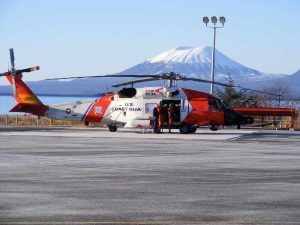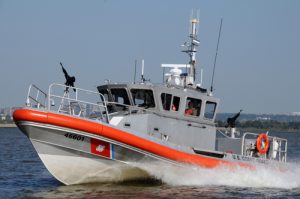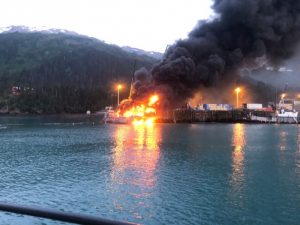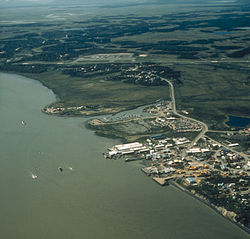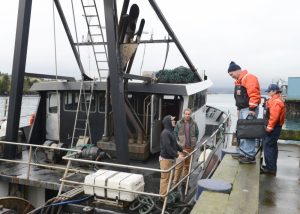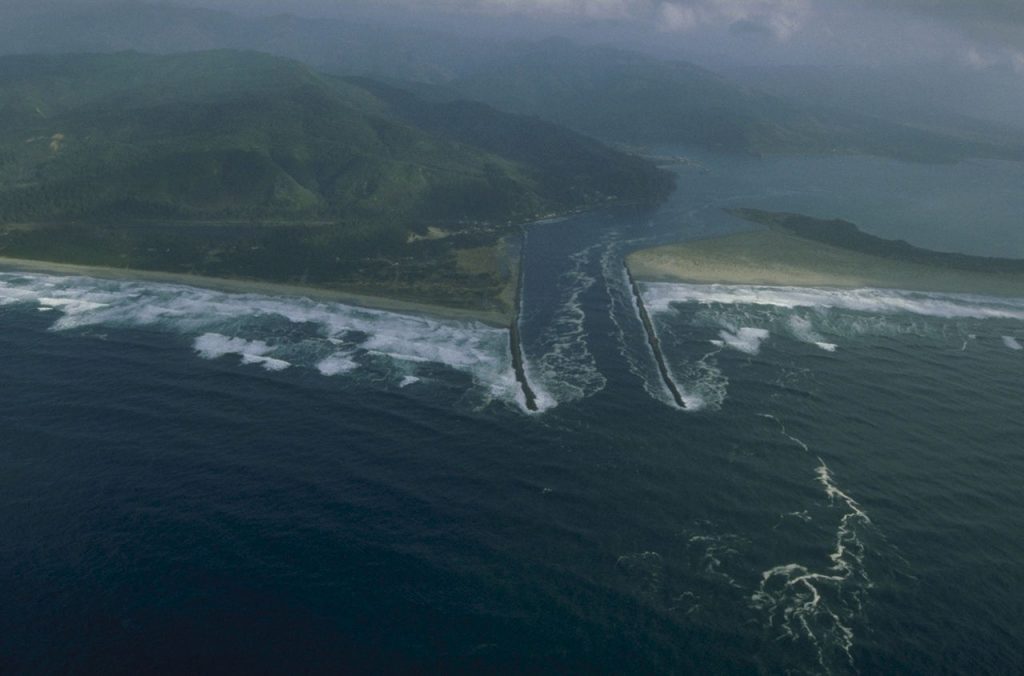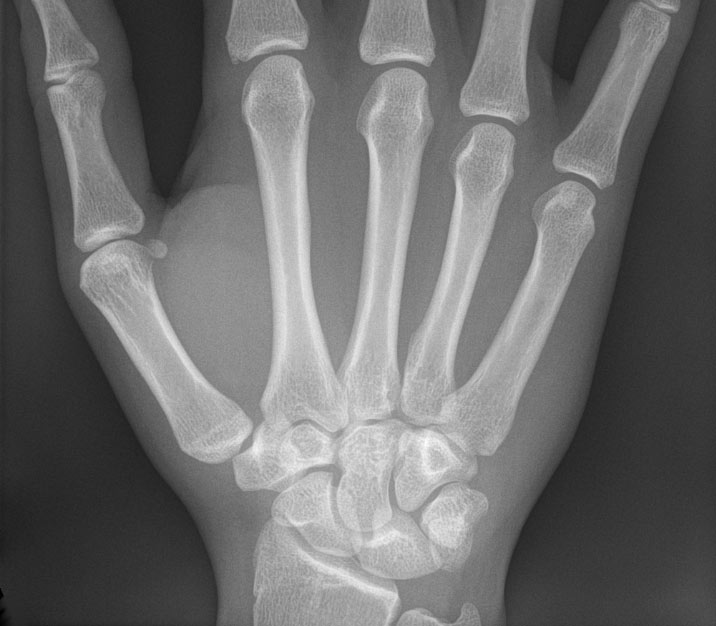Fisherman Suffers Lacerated Arm Aboard the F/V Lake Bay
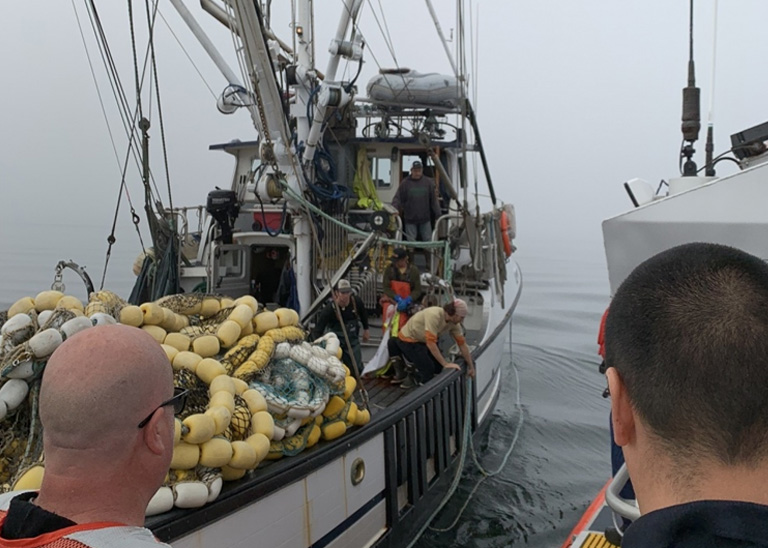 A 58-year-old fisherman working aboard the F/V LAKE BAY was medevaced on Monday after suffering a large laceration to his arm. Sector Juneau command center received a call from the vessel’s master that a crewmember had been injured and needed assistance.
A 58-year-old fisherman working aboard the F/V LAKE BAY was medevaced on Monday after suffering a large laceration to his arm. Sector Juneau command center received a call from the vessel’s master that a crewmember had been injured and needed assistance.
Sector Juneau issued an urgent marine information broadcast and launched a Station Ketchikan boat crew with local EMS aboard to respond. Ketchikan emergency medical services and the boat crew coordinated the transfer of the injured man to Station Ketchikan, then to Ketchikan Medical Center for treatment.
“Today there was a situation involving an injured fisherman in need of an escort to a higher level of care,” said Petty Officer 2nd Class Cody Mitchell, a coxswain on the case. “With the cooperation of multiple responding agencies, our boat crew was able to successfully medevac the injured man south of Bold Island to Ketchikan, even with the restricted visibility.”
 Maritime Injury Law Blog
Maritime Injury Law Blog




